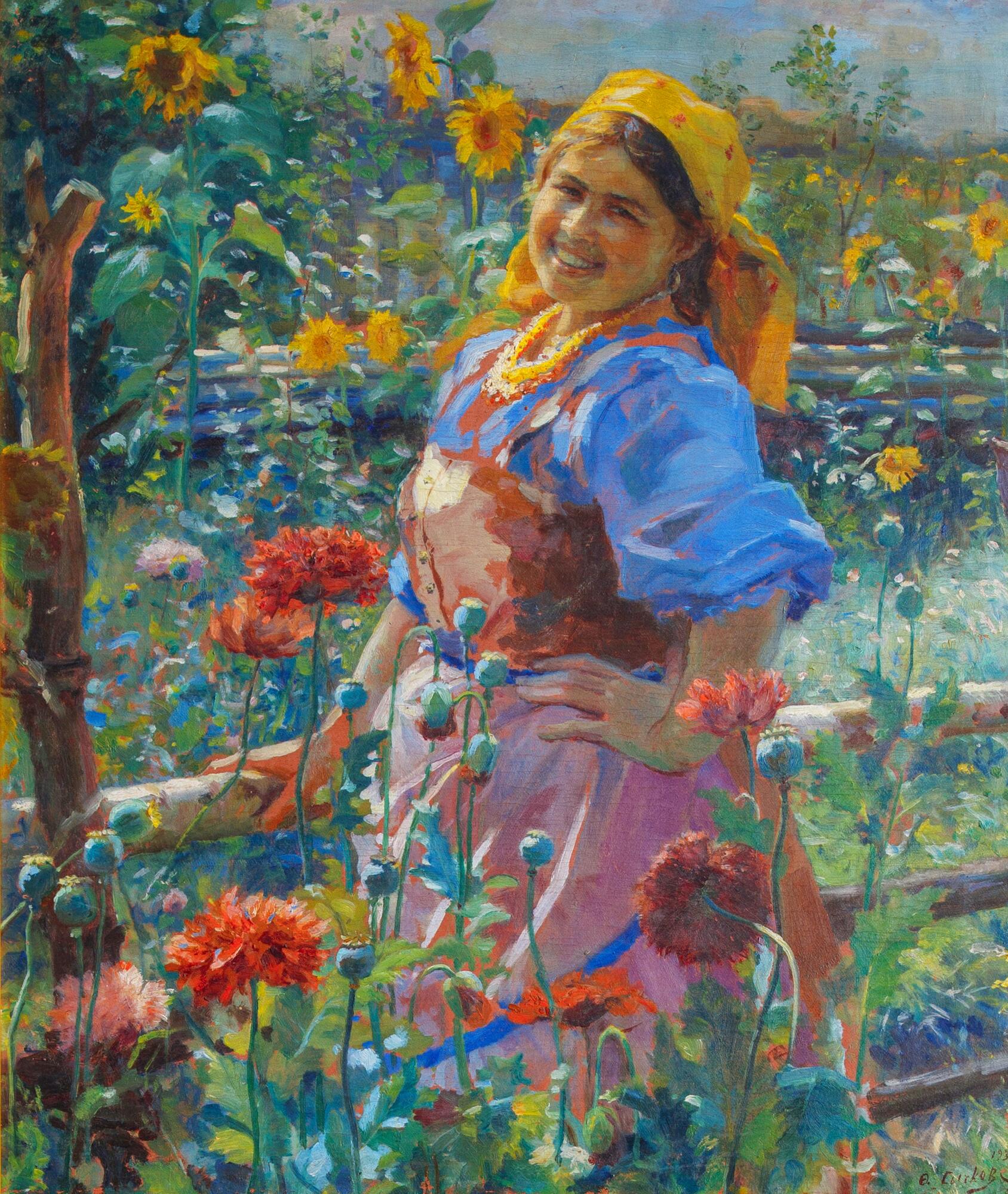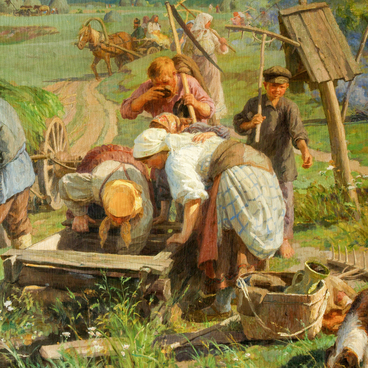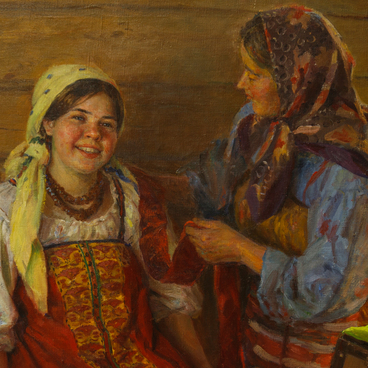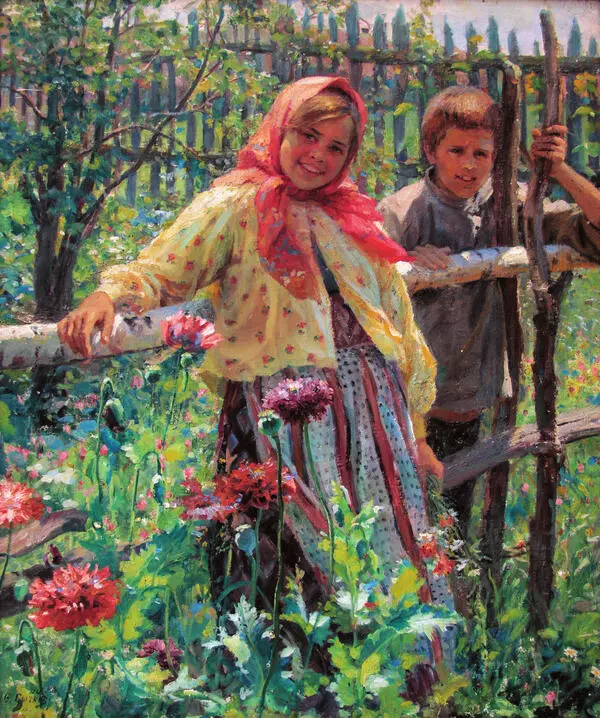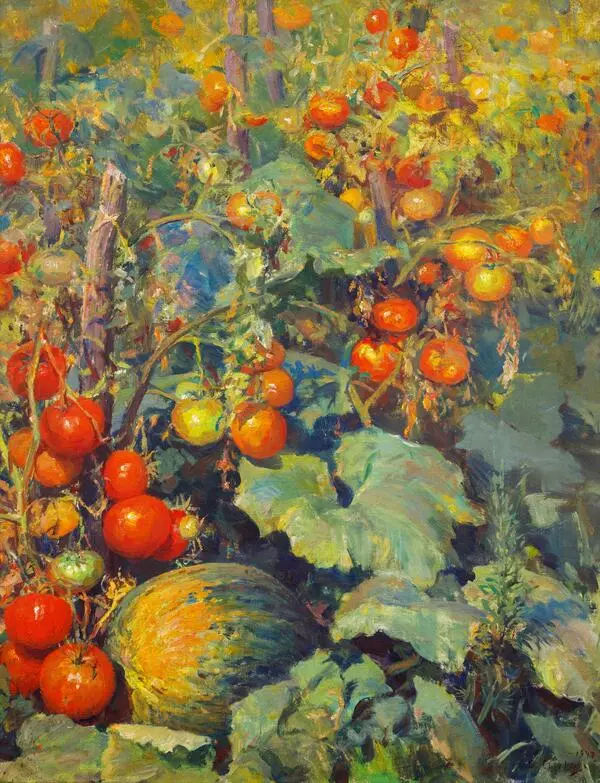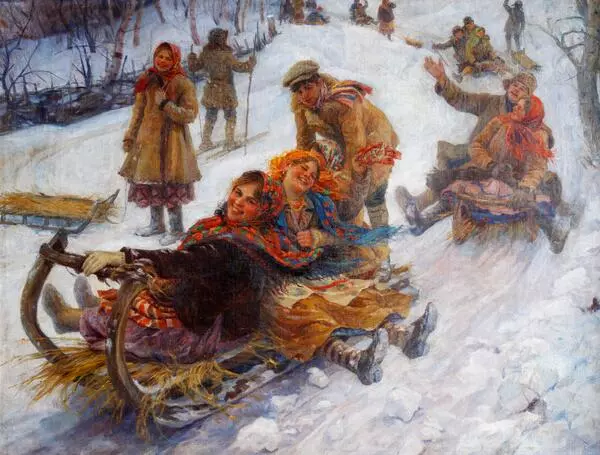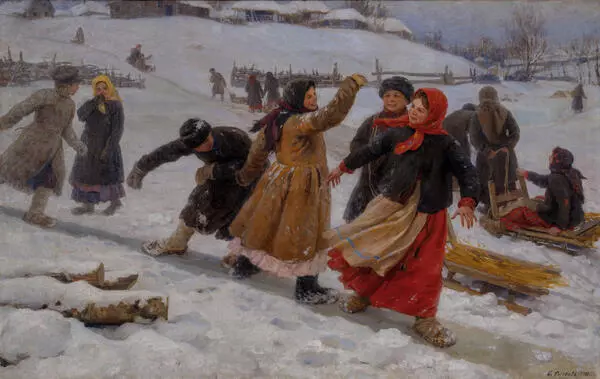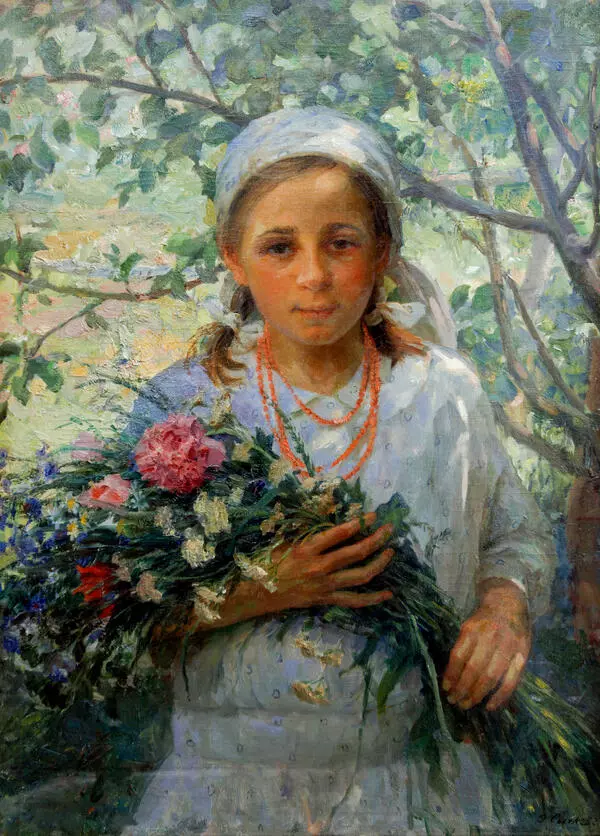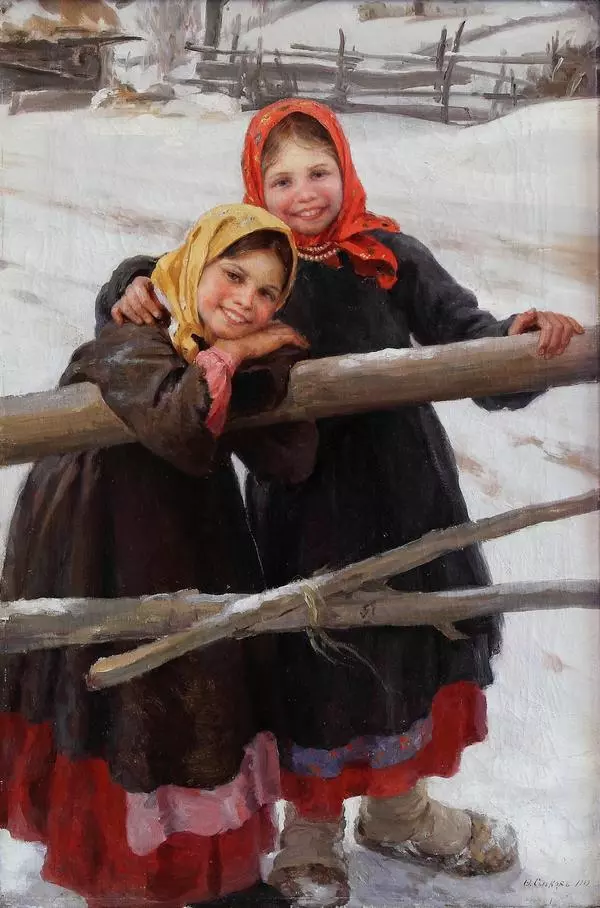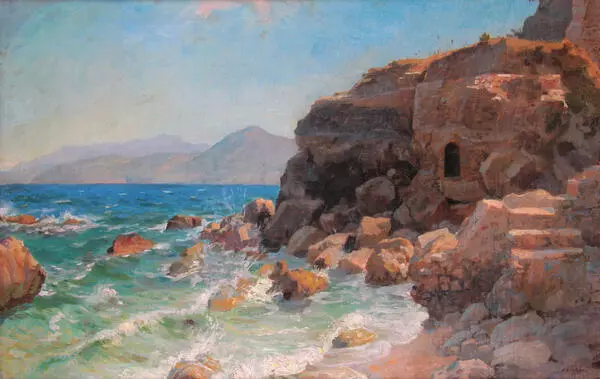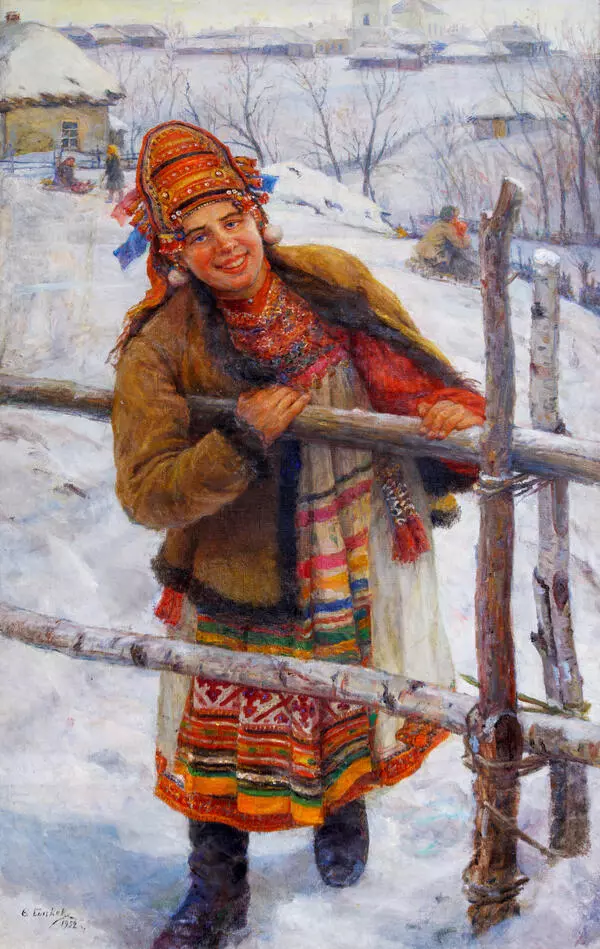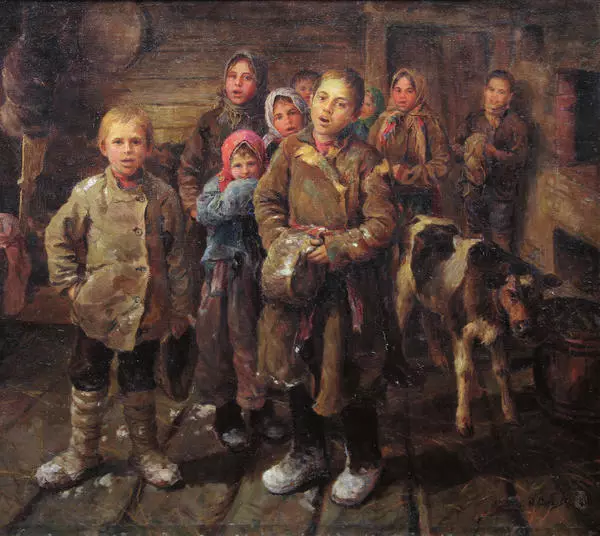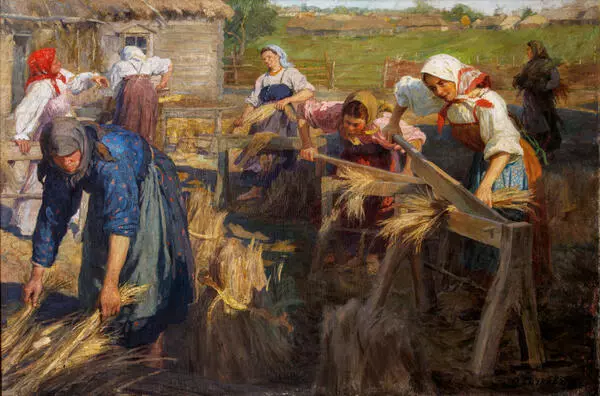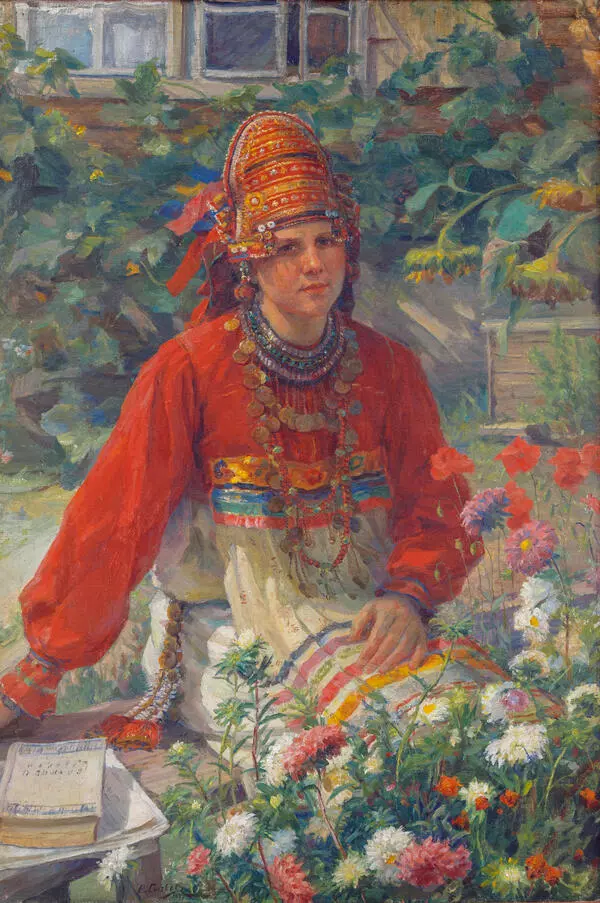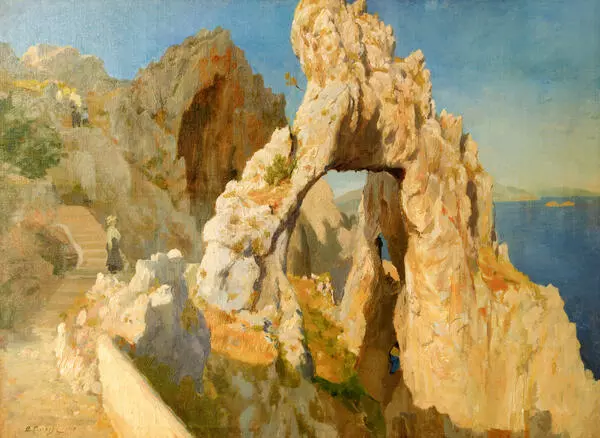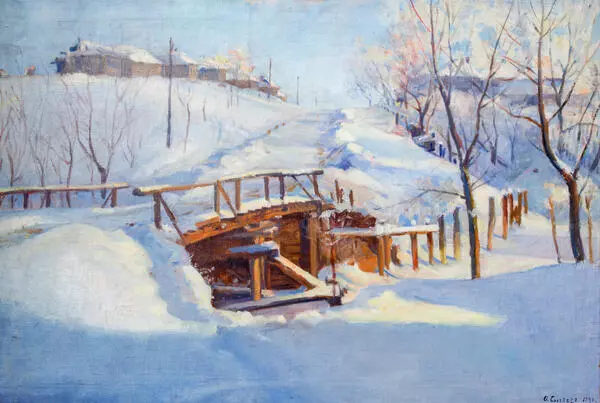In 1931, Fedot Sychkov created the canvas ‘By the Fence. Summer’. He portrayed a smiling peasant girl who directly and openly looks at the viewer. She is dressed in a blue blouse with puffy sleeves and a pale red sundress, belted with a pink apron.
The artist painted en plein air, capturing all the features of natural lighting. He confidently depicted the volumes with the help of bright highlighted areas and transparent shadows on the headscarf, clothes, and hands of the girl. The artist paid special attention to the smiling face of the girl with her cheerful eyes, slightly narrowed from the sunlight. It seems that nature itself is in harmony with the girl’s state of mind, with her sincere joy.
The girl in the painting is Sychkov’s fellow villager, Sofia Ryabova (her married name is Chizhikova). Though the heroine is based on the appearance of a particular person, it really is a collective image. The image embodies the type of rural beauty that was especially dear to the artist: the charm of blooming youth, an excess of vitality, overflowing energy, strength, and health. Critics agree that this is one of the best Sychkov’s works in terms of the colorfulness and the artistry of painting. The artist accurately conveyed the appearance of Sofia Ryabova, capturing the unique curve of her eyebrows and her characteristic smile with ease. With liberal brushstrokes, he painted sunflowers and poppies around her. He boldly left reflections of various colors on the hands and the dress of the heroine: green highlights on the cheeks and on the palm, light flashes of pink shades on the blue jacket. These reflections bring a special thrill and liveliness to the artwork.
“Near the fence. Summer” is an example of Sychkov’s favorite genre — portrait painting. In such artworks, he did not simply create a portrait against a neutral background but painted the models in a familiar to them environment to better reveal their character. This could be seen in ‘Summer’, ‘Harvester’, ‘Near the Fence. Winter’, ‘Girl in a blue shawl’, ‘Tanya’. The artist did not strive to create portraits of people with complex characters. The artist’s favorite type was a strong-built, smiling, open peasant woman who boldly looks at the viewer. This is Sychkov’s ideal, which, perhaps, is far from perfect beauty, but it impresses by its sincerity. Almost every artwork of such nature presents a nice, friendly worldview that belongs to the characters and the artist himself.
The artist painted en plein air, capturing all the features of natural lighting. He confidently depicted the volumes with the help of bright highlighted areas and transparent shadows on the headscarf, clothes, and hands of the girl. The artist paid special attention to the smiling face of the girl with her cheerful eyes, slightly narrowed from the sunlight. It seems that nature itself is in harmony with the girl’s state of mind, with her sincere joy.
The girl in the painting is Sychkov’s fellow villager, Sofia Ryabova (her married name is Chizhikova). Though the heroine is based on the appearance of a particular person, it really is a collective image. The image embodies the type of rural beauty that was especially dear to the artist: the charm of blooming youth, an excess of vitality, overflowing energy, strength, and health. Critics agree that this is one of the best Sychkov’s works in terms of the colorfulness and the artistry of painting. The artist accurately conveyed the appearance of Sofia Ryabova, capturing the unique curve of her eyebrows and her characteristic smile with ease. With liberal brushstrokes, he painted sunflowers and poppies around her. He boldly left reflections of various colors on the hands and the dress of the heroine: green highlights on the cheeks and on the palm, light flashes of pink shades on the blue jacket. These reflections bring a special thrill and liveliness to the artwork.
“Near the fence. Summer” is an example of Sychkov’s favorite genre — portrait painting. In such artworks, he did not simply create a portrait against a neutral background but painted the models in a familiar to them environment to better reveal their character. This could be seen in ‘Summer’, ‘Harvester’, ‘Near the Fence. Winter’, ‘Girl in a blue shawl’, ‘Tanya’. The artist did not strive to create portraits of people with complex characters. The artist’s favorite type was a strong-built, smiling, open peasant woman who boldly looks at the viewer. This is Sychkov’s ideal, which, perhaps, is far from perfect beauty, but it impresses by its sincerity. Almost every artwork of such nature presents a nice, friendly worldview that belongs to the characters and the artist himself.
